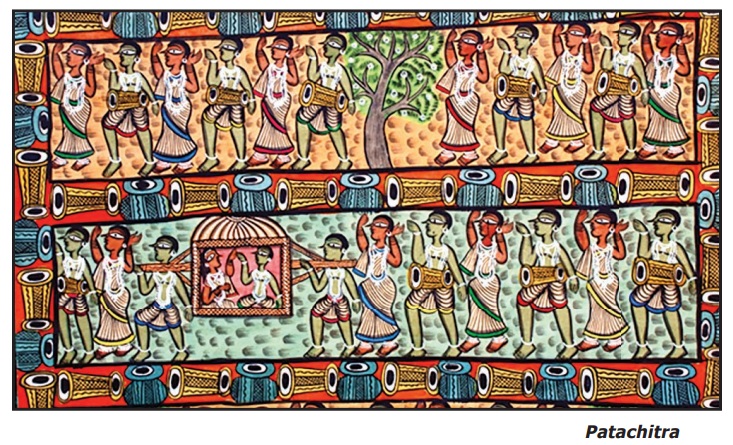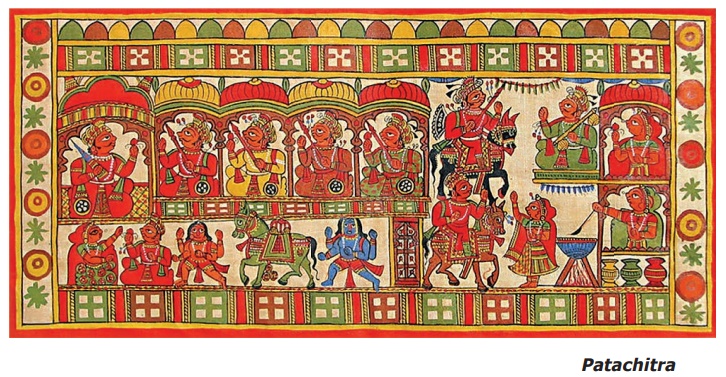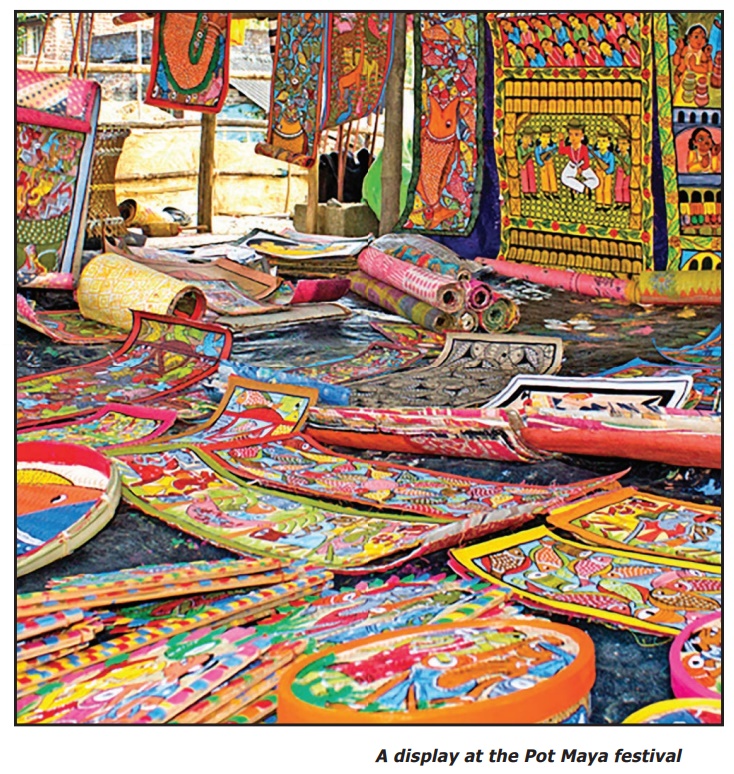Supplementary - Term 2 Unit 2 - 7th English - Naya - The Home of Chitrakaars | 7th English : Term 2 Unit 2 : Supplementary : Naya - The Home of Chitrakaars
Chapter: 7th English : Term 2 Unit 2 : Supplementary : Naya - The Home of Chitrakaars
Naya - The Home of Chitrakaars
UNIT 2
Naya - The Home of Chitrakaars
Supplementary

Naya is a quaint little village in West Bengal’s
Midnapore district. However, it is not an ordinary village. Around 250 patuas or
chitrakaars or artists live there. These folk artistes are painters, lyricists,
singers and performers all rolled into one. They practise an ancient folk art called
Pata Chitra. This is a type of storytelling using painted scrolls. The scrolls have
stories painted on them and the artists sing the story as they unroll the scroll.
This art has been practised since the 13th century.
Traditionally, such story tellers took their painted
scrolls from village to village. In every village they unrolled the scrolls frame
by frame. and sang pater gaan or the story songs. In return for their performance,
the villagers gave them rice, vegetables and money. Their stories included mythological
stories and tribal folklore. Nowadays the artists sing of social messages and contemporary
events as well.
Over time, however, people lost interest in this
art form and there were few artists and fewer listeners. To keep their art alive
in the modern world, the patuas adapted their skills and themes to the times. An
innovative step they took to do this was to establish a patachitra village at Naya.
Slowly, the efforts to revive their artistic heritage started paying off. Today,
the patachitra art is flourishing again in thevillage, with village youngsters taking
up the traditional art form as a passion and profession.
A traditional pata was painted on a canvas
made of jute fibre. Now, it is made by stitching together sheets of commercial poster
paper. The colours come from plants such as marigold, indigo, teak leaves, saffron,
and turmeric. They also use lamp black. The colours are mixed in coconut shells
with the sap of the bel tree (wood apple), which acts as a glue. After finishing,
a thin cotton cloth is glued to the back of the painting so that it will last long.
Next, the completed scrolls are dried in the sun before they are stored in rolled
up bundles.
Today the patuas make rectangular and square-shaped
paintings of different sizes. Social messages like conservation of trees, female
infanticide, child-traffi cking and AIDS awareness figure in their paintings. They
also paint images of traditional subjects, such as a cat eating a lobster or fish,
tigers, rows of cows or white owls. The patuas today do not make too many long story
scrolls. A few of them still sing their self-composed songs, but only on demand.
The patachitra art tradition was traditionally
passed down from father to son, but today many patua women have also taken up the
craft. Under an initiative ‘Art for Livelihood’, some of these women are leading
local development.

Since 2010, an annual three-day festival Pot
Maya has been held to celebrate the success of the local artists. Held in November
every year, the festival exhibits modern paintings as well as scrolls dating back
hundreds of years. At this time, the villagers paint the mud walls of their houses
with colourful patachitra motifs and hang scrolls on ropes in the courtyards.
They also clean up the surroundings and decorate the entire village with flowers
to get ready for visitors. As there are no hotels in the village, the patuas house
the visitors in their own homes and in tents.

During the festival, the quiet hamlet is transformed
into a vibrant cultural hub where visitors can learn about the craft of patachitra.
Several workshops are held, stories are told, and different types of pata
artwork are displayed for sale. Musical and dance performances by well-known artists
start in the evening and go on well into the night. The patuas hold demonstrations
on natural colour extraction from sources
Watching a patua singing gently as he or
she unfurls the scrolls is an unforgettable experience. The play of light and shadow
from the oil lamps on the soft colours and delicate imagery of the paintings is
magical. If you are interested in traditional art and crafts, do visit this unique
village. It will be a delightful experience in a beautiful rural setting.
Related Topics